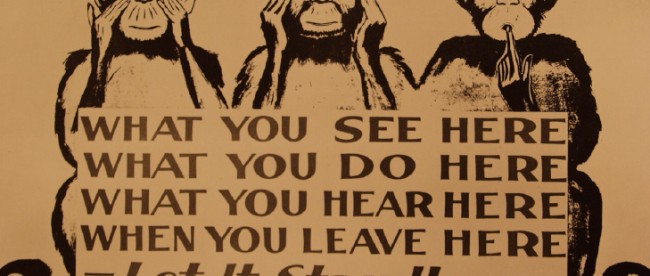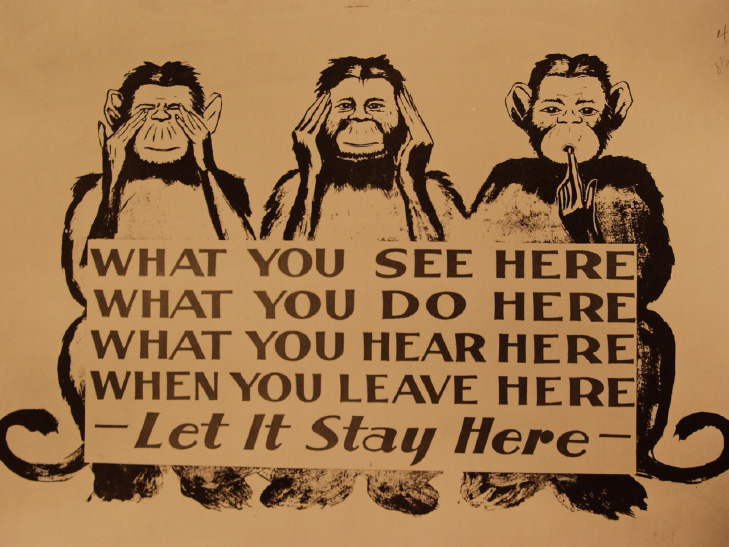Why Stealing America’s Nuclear Secrets was as Easy As Pi


Richard Feynman was one of modern history’s greatest scientists — a Nobel Laureate in Physics (1965) and well-respected academic who was later a member of the commission which investigated the Challenger explosion. He was recognized as a promising young physicist early in his career, and in the early 1940s, Feynman was a junior researcher at Manhattan Project, the American efforts to develop a nuclear weapon. While Feynman’s resumé as a physicist is second to few, from a historical perspective, his role at the Manhattan Project was minor; for example, in the Project’s Wikipedia entry, he’s only mentioned in a picture caption.
That’s partially because he never stole anything — even though he almost certainly could have.
A weapons development portion of the Manhattan Project was housed at New Mexico’s Los Alamos National Laboratory, where Feynman worked. The laboratory is located in the middle of nowhere — here’s a map — which gave it some inherent security. However, by many accounts, security at Los Alamos wasn’t all that impressive. For example, in the book “Manhattan Project: The Birth of the Atomic Bomb in the Words of Its Creators, Eyewitnesses, and Historians,” the security measures were called “laughable” and “always a headache.” (The sign pictured above, via here, was one such example.) For Feynman, though, they were a source of entertainment. As the book explains:
[Feynman] noticed a hole in the fence surrounding Los Alamos — so he walked through the main gate, waved to the guard, and then crawled back through the hole and walked out the main gate again. He repeated this several times. Feynman was almost arrested. His antics became part of Los Alamos lore.
Security-busting became a pastime for Feynman, as he’d address in his autobiography. In a chapter titled “Safecracker Meets Safecracker,” Feynman discussed his interest in picking locks — an interest which predated his time at Los Alamos — and how it led him to notice that the nuclear research facility had substandard security:
When we started to work on the atomic bomb project at Los Alamos, everything was in such a hurry that it wasn’t really ready. All the secrets of the project — everything about the atomic bomb — were kept in filing cabinets which, if they had locks at all, were locked with padlocks [and] were as easy as pie to open.
Feynman wasn’t at Los Alamos to steal nuclear secrets, but he found that simply alerting the military police and Lab security details to the deficiencies wasn’t enough — they simply ignored his complaints. As a result, Feynman started to demonstrate the problem — he began circumventing the “security” measures, showing officials where the problems were.
Ultimately, Los Alamos’s filing cabinets were outfitted with better locks. For Feynman, this was a challenge, which from a security perspective, was a good thing. But for Feynman, it was a great thing — his hobby just became a lot more difficult, and therefore a lot more interesting. First, he bought himself a book on safecracking, but the book simply suggested to look for numbers which had a personal meaning to the person who set the combo; for example, many people use their birthdays. Feynman discounted the book’s advice and instead turned to math, which proved somewhat successful. He came up with a way to narrow down the possible combinations any one lock could employ — he estimated that his new system gave him a one-in-8,000 chance of opening any given lock — and then used his copious amounts of free time (apparently, he was really bored) to test various combos on filing cabinets around the facilities. Over time, he was able to open many cabinets, further entrenching his reputation as a master safecracker. Of course, there were many other locks which he hadn’t had a chance to test, but no one needed to know that.
And then, after the war, he ran into a minor problem. He needed a copy of a document, but the library was closed — it was a weekend — and he didn’t want to wait. He remembered that a colleague of his, Frederic de Hoffmann, had many documents in one of his nine locked filing cabinets. (Many of these documents contained the secrets behind the nuclear bomb.) Feynman hadn’t ever tried to crack de Hoffmann’s codes, though, so he was stuck — at first. That’s when Feynman recalled the advice of the book he had read earlier, and began to search for a clue into de Hoffmann’s numerical preferences. A document in his secretary’s desk gave him the first clue; for some reason, she had “pi = 3.14159” written on top of a piece of paper. Feynman deduced that this had something to do with de Hoffmann’s combos (why would a secretary care about the value of pi?, he thought) and tried 31-41-59 out. It didn’t work. Neither did a few other pi-themed combinations. And then inspiration struck Feynman. He tried 27-18-28 — a reference to the constant e, the base of the natural logarithm. It opened the first cabinet, and the second, and a third, before he stopped. Richard Feynman had just broken into a cache of some of the United States’ most sensitive nuclear secrets.
So he decided to have a little fun. Feynman left notes in the cabinets, as he further described:
I went back to the second filing cabinet and took out the document I wanted. Then I took a red grease pencil and a piece of yellow paper that was lying around in the office and wrote, “I borrowed document no. LA4312 — Feynman the safe-cracker.” I put the note on top of the papers in the filing cabinet and closed it. Then I went to the first one I had opened and wrote another note: “This one was no harder to open than the other one — Wise Guy” and shut the cabinet. Then in the other cabinet, in the other room, I wrote, “When the combinations are all the same, one is no harder to open than another — Same Guy” and I shut that one. I went back to my office and wrote my report.
De Hoffmann discovered one of the notes shortly thereafter — the one signed “Same Guy.” And unfortunately, de Hoffmann didn’t realize that this was a reference to the other two notes, as he didn’t even know the other two notes existed. Instead, his imagination got the better of him, and believed that “Same Guy” meant that this was the “same guy” as someone who was trying — successfully, in de Hoffmann’s mind — to break into Los Alamos. (As it turns out, there was a Soviet spy who worked on the Manhattan Project, but his information wasn’t all that useful, and it’s unlikely de Hoffmann knew about him at the time.) He searched through all his files to see if anything was missing, and found the “Wise Guy” note next, redoubling his fear.
Feynman, who was in the room and watching de Hoffmann’s panic attack play out, somehow directed him to the cabinet with last note in it, and per his book, “began to walk down the hall,” afraid that de Hoffmann would kill him for the prank gone wrong. But thankfully, de Hoffmann’s sense of relief was much greater than his anger; upon finding the note signed with Feynman’s name, de Hoffmann hugged his safecracking colleague to celebrate the fact that America’s atomic secrets were still safe.
Assuming, that is, that no actual spies read an off-the-shelf book on safecracking.
 Bonus Fact: The 762nd through 767th decimal places of pi are often called the “Feynman point,” a reference to a (very nerdy) joke he’d like to tell. Pi is an irrational number, but the six digits at the Feynman point are all nines. Feynman, as Wikipedia notes, memorized pi to the 767th digit so he could recite the entire string of numerals and conclude with “nine nine nine nine nine nine and so on,” suggesting (jokingly) that pi continued on as a string of nines from that point forth. (The 768th digit of pi, for what it’s worth, is 8. And if Feynman is any evidence, Nobel-winning physicists have a strange sense of humor.)
Bonus Fact: The 762nd through 767th decimal places of pi are often called the “Feynman point,” a reference to a (very nerdy) joke he’d like to tell. Pi is an irrational number, but the six digits at the Feynman point are all nines. Feynman, as Wikipedia notes, memorized pi to the 767th digit so he could recite the entire string of numerals and conclude with “nine nine nine nine nine nine and so on,” suggesting (jokingly) that pi continued on as a string of nines from that point forth. (The 768th digit of pi, for what it’s worth, is 8. And if Feynman is any evidence, Nobel-winning physicists have a strange sense of humor.)
From the Archives: The Bat Bomb and The Gay Bomb: Two alternatives to the nuclear bomb which didn’t quite work out.
Take the Quiz: A quiz on the events surrounding the development of the atomic bomb and its role in World War II.
Related: “Surely You’re Joking, Mr. Feynman! (Adventures of a Curious Character),” Feynman’s autobiography. A New York Times best-seller; 4.6 stars on 744 reviews. Also, “Manhattan Project: The Birth of the Atomic Bomb in the Words of Its Creators, Eyewitnesses, and Historians,” 4.4 stars on 123 reviews.
